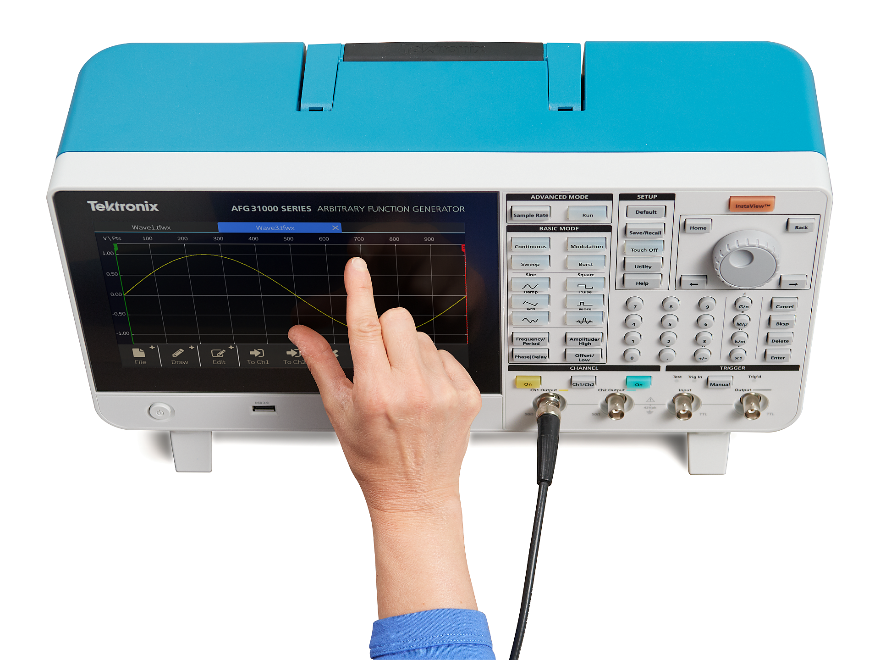
By Eric Yang
Whether you’re building IoT devices, next generation mobile devices, or advanced automotive sensors, chance are good that you have your hands full trying to keep pace. Designs have to be smaller, lower cost and more capable – and you have to deliver while your time to market window is shrinking.
That’s the way of engineering these days, and it falls to us in the test and measurement industry to find ways to help our customers meet the escalating demands and pressure they are facing.
Beyond delivering the measurement insights needed for today’s more complex designs, a big part of what Tektronix can do to help busy engineers is to make our instruments easier and more intuitive to use. We accomplished a significant breakthrough in that regard with the 5 Series MSO mixed signal oscilloscope that features a large touch screen interface and a completely new user interface that demonstrably saves users time and increases productivity.
Now, as we announced this week, we are redefining the arbitrary/function generator with the launch of the AFG31000 Series. A completely new design, the AFG31000 delivers a number of industry firsts and offers up the largest touchscreen (9-in.) available on any AFG along with a new and more capable user interface. It’s the perfect companion to our touchscreen-enabled scopes and will enable customers to create the test stimulus they need much faster and easier than was previously possible. You can read up on the instrument’s many industry firsts and key features in the multimedia news release or visit the AFG31000 product page,

For a quick summary, watch the technical overview video here.
One of the questions that still comes up is whether engineers truly need and a want touch screen UI. As we look back some 10 plus years, many pundits were asking the same question about the first generation iPhone – and we all know how that turned out.
What were seeing now is that the younger generation of engineers, who grew up with smart phones, expect to have a similar experience with test instrumentation. To that end, we worked closely with customers, design engineers and user experience experts and went through several rounds of design changes based on customer feedback. For the AFG31000’s touchscreen, we incorporated operations like tap, swipe, pinch and zoom, drag and drop that not only ease the process of finding and changing parameters or settings, but also enable users to create and edit arb waveforms, or build waveform sequences with their fingertips. Without question, this approach is much easier and faster than traditional AFG operation.

Of course, there were other aspects to AFGs that customers wanted to see improved as well. One of those was the annoyance when there’s an impedance mismatch between the signal the AFG is sending and what the DUT is actually receiving – it’s not always 50 Ω as AFGs expect. To solve this problem, the AFG31000 incorporates new patented InstaViewTM technology that allows users to monitor and display the waveform at the device under test without the need for additional cables or instruments.
Another new timesaver is the ArbBuilder tool that enables users to create and edit arbitrary waveforms directly on the instrument. Until now, the only option was to create the waveforms on a PC then transfer them to the instrument. However, in a busy lab environment, a dedicated user interface offers a more intuitive and convenient way to control the instrument. And, in any case without a large touchscreen, it would have been nearly impossible to configure waveform sequences on an AFG. With ArbBuilder running on the instrument we are not only giving users more flexibility and convenience, we are eliminating extra cost, the need for extra space on the bench, the extra connection between the PC and AFG, and the extra effort to transfer setups to the AFG.
As you read up on the AFG31000, you’ll also learn about other time saving features like simplified mult-unit synchronization and programmable waveform sequencing. In the case of the latter, the AFG31000’s 128 Mpts of waveform memory can be segmented into up to 256 entries, and users can drag and drop long waveforms, or multiple waveforms in the sequencer and define how they are output. I should mention that this advanced functionality comes at a fraction of the cost of an arbitrary waveform generator (AWG).
AFG31000 series instruments are available in 1- or 2-channel configurations and deliver 14-bit vertical resolution along with 250 MSa/s, 1 GSa/s or 2 GSa/s sample rate performance. Additionally, in traditional AFG mode, users can change frequency without worrying about waveform length and sample rate. Output amplitude range is 1 mVP-P to 10 VP-P into 50 Ω loads.
The AFG31000 series arbitrary/function generator models with 25, 50 or 100 MHz bandwidth are available now globally. Models with 150 or 250 MHz bandwidth are scheduled for release in November. Prices start at $2,210 US MSRP.


